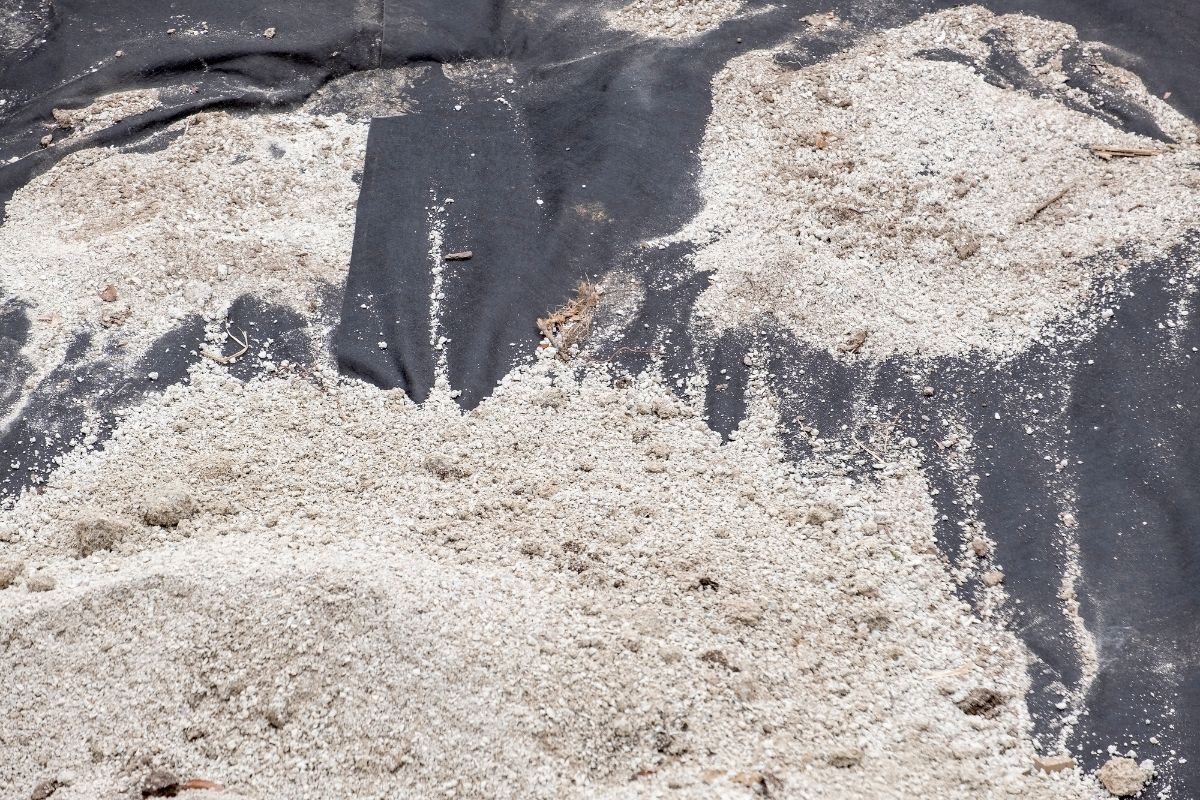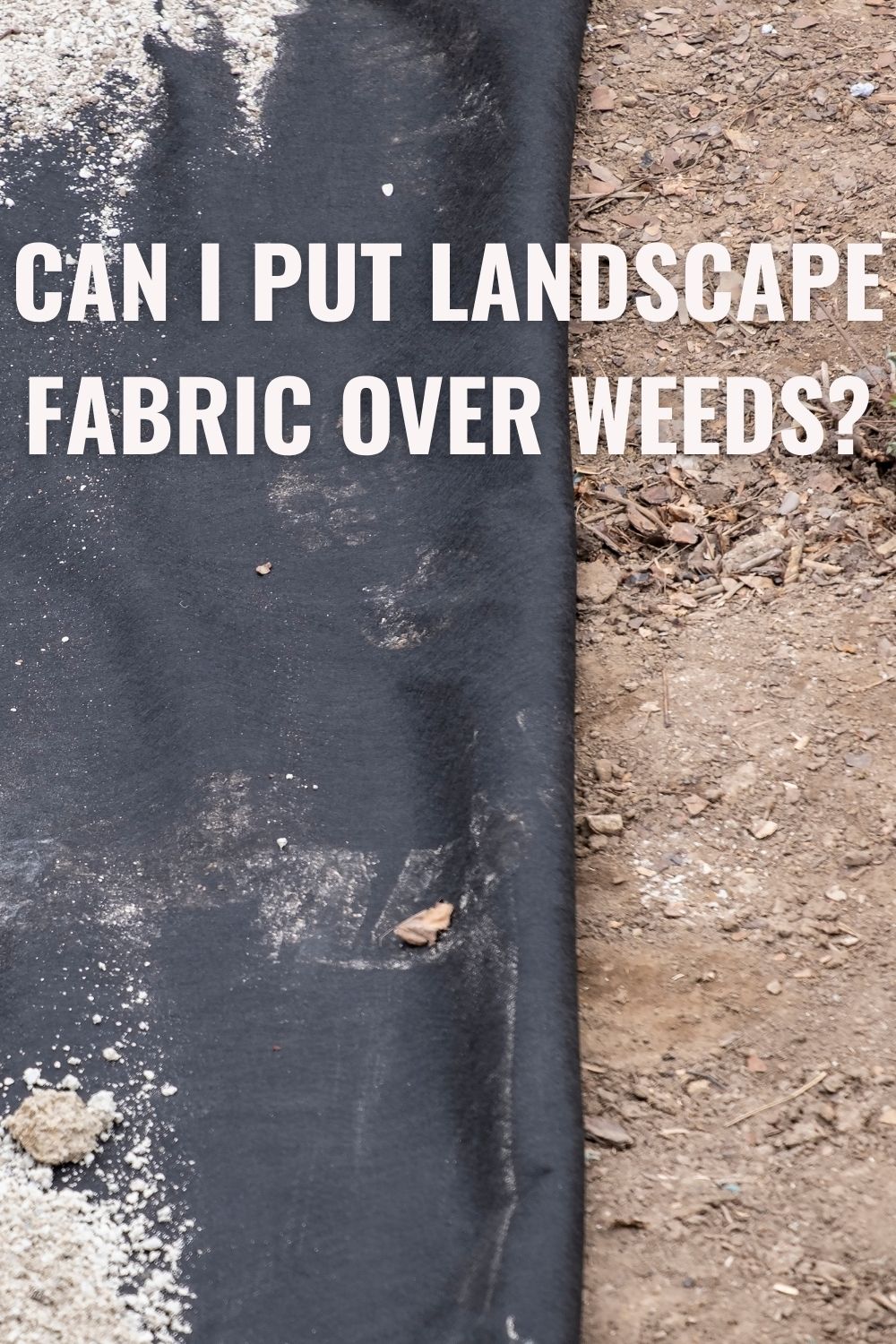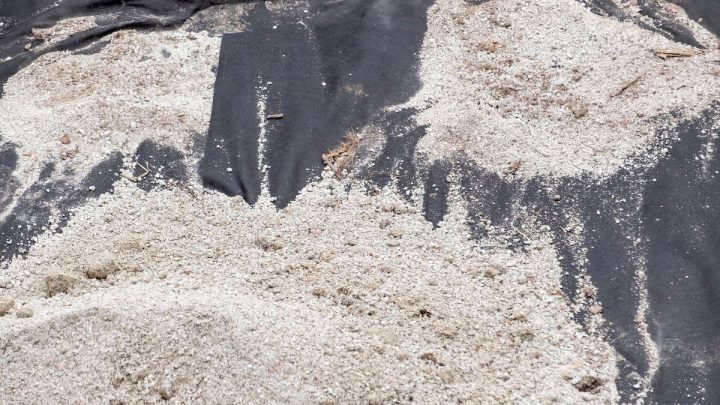As a new gardener, you are probably willing to do whatever it takes to get your garden or vegetable patch ‘up to scratch’ and envisage long hours and backbreaking work. While there are elements of both in your gardening future, the good news regarding weed removal is that technology has now leveled the playing fields, and landscape fabric is here to assist. Have you asked yourself: “Can I put landscape fabric over weeds?” Let’s find out!
Can you put landscape fabric over weeds? Yes, most definitely, but an even more effective method of weed control is to remove the weeds before laying the cloth. An alternative is to apply the material directly to the weeds and cover the fabric with an inorganic mulch like gravel or small stones.

There are different ways to use landscape fabric over weeds. Failure to do so correctly might result in some weeds growing through the material and damaging it or even growing on top of the fabric in any spilled soil or compost. However, gardeners can and do use the cloth to kill large areas of weed growth without employing herbicides harmful to other plants. Let’s explore this in more detail.
What Was Used On Weeds Before Landscape Fabric?
If you’re tired of fighting weeds in your lawn and garden, you may be looking for a more permanent solution. No one wants to pull weeds every day. But thankfully, there are many techniques and tools available to help with this. Here are 2 of my favorite ways to deal with weeds:
Over the years, technology has brought us new and improved ways to fight back against garden weeds.
Before landscape fabric came along, gardeners often used black plastic sheeting to kill weeds. However, black plastic doesn’t allow air circulation, whereas landscape fabric does. It has tiny holes for air and water to pass through. This means it is much better at this than older methods like black plastic.
When used properly, landscape fabric can help kill grass and weeds. Gardeners often use this to kill large areas of grassy weeds in the lawn or around the garden area. This is a great way to kill the weeds without using any harmful herbicides which would damage surrounding plants and are terrible when used around food gardens.
How Does Landscape Fabric Work Against Weeds?
Heat generates underneath the fabric, killing both weeds and the weed seeds. It may take several weeks for weeds to be burned up by the heat generated solely by the material, so if the weed scourge is excessive, I would advise using pebbles on top of the fabric. This will increase the heat generated as well as keep any light from the weeds. Note that direct sunlight will degrade the material over time.
Tilling the soil before laying the fabric will turn up most weeds, seeds, and tubers. If there are very few weeds, you can also lift these by hand before introducing the landscape material, But, if you find yourself with a field of weeds and insufficient time to till or pull them, cover them with landscape fabric (see how below).
Related: Best weed barrier fabric
What Is The Correct Way To Lay Landscaping Fabric?
Using a sharp pair of scissors, cut the fabric to the size of the area of weeds that you wish to cover, and pin the edges down every two feet with landscape staples or four-inch nails. Cover the fabric with the inorganic mulch, and monitor weekly for any escape artists, which you can pull by hand.
Remember that if you decide to use an organic mulch on top of the landscape fabric, too much mulch will create a ‘mini-garden’ on top of the material, and weeds don’t need a lot of space to take hold. Very soon, they will be driving their roots down through the (not inexpensive) landscape fabric in a bid for a permanent home.
If there are weeds underneath the fabric, it’s important that you pull them first. When you pull the weeds while they are young, they won’t push a larger hole through the fabric, causing it to break down more quickly. You’ll get much more use for a long time from the fabric when you prep the ground well underneath and remove the existing weeds.
What Are the Benefits Of Using Landscape Fabric?
The main benefit of landscape fabric is its ability to retard weed growth, which helps reduce the need for herbicides. However, this fabric will not stop every weed and should be considered another garden tool rather than a ‘miracle pill.’ When used along with other techniques, you will get the best and most long-lasting results.
These fabrics work best in a semi-permanent garden bed rather than a vegetable field or an annual bed, both of which are being continually worked on.
Another widespread use for landscape fabric is to prevent or limit soil erosion on steeper slopes, as the material can prevent washouts from an intense downpour. If you live in an area that gets a lot of rainfall per year, has sloping land that is prone to erosion and runoff, or other issues with erosion, this is a good time to use fabric to help hold everything in place where you want it to be.
Maybe that sounds great, but are there times that you don’t want to use landscape fabric?
Are There Downsides To Using Landscape Fabric?
Are there times when there could be something else that works better to achieve the same goal? Sometimes people use this method to cut down on common garden maintenance tasks, but it’s not always the shortcut you’re looking for.
Most landscape textiles are made from recycled organic or synthetic materials, and a lot of the newer fabrics are made with air holes to allow your soil to breathe while still preventing weeds. However, many are made of plastic and other polymers that are not eco-friendly, so choose carefully, although even the ‘good’ ones have drawbacks:
- Your soil needs worms for aeration and for providing valuable organic matter. Earthworms cannot breathe underneath some of these fabrics, leaving the earth compacted and unhealthy.
- Some of these fabrics are not perforated, preventing the water and sun from getting to the roots of your plants, and those that are perforated become clogged up by dirt, leaves, etc., over time.
- Left uncovered, many will quickly degrade in the sun, so arid areas will need to be mulched on the day of installation.
Now, let’s look at some other options you might consider instead. Sometimes the best solution is something simpler.
Alternatives To Landscape Fabric
There are several other materials that a gardener can use in place of landscape fabric. However, they all have a limited level of success, and most need constant attention and regular maintenance:
- Cardboard and newspaper are both inexpensive and porous, but unless they are covered with something else, they may end up blowing all over your garden when dry. If you mulch on top of the cardboard, you’ll have a better chance of success.
- Hay and straw work very well if carefully maintained, but hay has its own seeds that will sprout in due season, giving you a lovely lawn-like result, but one which still needs to be weeded.
- Stones and gravel are an excellent alternative to landscape fabric but are expensive and thus unsuitable for many home gardeners.
- Mulch, wood chips, and compost are natural, inexpensive, and organic, which strikes the right note for most of us, but compost is useless when laid on weeds and will double your problem in just a few weeks. A layer of mulch can be effective if laid thick enough, but not so thick as to prevent the ground from warming in colder zones.
When it comes to ground covers, there are many options available. Textiles that are designed for this purpose are made to allow the plant roots to grow through as they need, but it’s supposed to stop grassy weeds, at least for a time before it needs to be replaced.
Can I Put Landscape Fabric Over Weeds? – Conclusion
If you decide to go the landscape fabric route, ensure that yours has perforations and will allow the soil to breathe, but be aware that nothing lasts forever. While it can act as a weed barrier for a time, it won’t last forever. It will require replacing in two to seven years, depending on the quality of the fabric and your circumstances, concerning heat, soil type, pests, etc.
Do you use this technique in your own lawn or garden? Do you think that you’ll change based on the things you learned from this post?





How To Get Rid Of Weeds For Good
Wednesday 26th of July 2023
[…] Can I put landscape fabric over weeds? […]